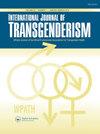非二元青年:获得肯定性别的初级保健
Q1 Social Sciences
引用次数: 135
摘要
背景:性别二元之外的跨性别(trans)青年是一个不断增长的亚群体。在这篇文章中,我们记录了二元性别和非二元性别的跨性别青年在获得性别肯定医疗保健方面的差异,并探讨了在初级保健机构中满足非二元性别青年健康需求的方法。方法:加拿大跨性别青年健康调查是2013-2014年对14-25岁跨性别青年进行的全国性在线调查。在839名回答性别认同问题的参与者中,41%的人认为自己是非二元的。我们比较了非二元和二元青年(跨性别女孩/女性和跨性别男孩/男性)的人口统计学、健康结局和医疗保健获取反应。结果:非二元和二元青年在大多数人口统计数据上相似,包括年龄、地理分布和种族文化背景,但非二元青年在出生时被分配为女性的比例更大(82%)。年龄较大的非二元青年(19-25岁)比年龄较大的二元青年更有可能放弃所需的医疗保健;青年(14-18岁)非二元和二元青年在上述保健方面无显著差异。总体而言,非二元青年(13%)接受激素治疗的可能性明显低于二元青年(52%),但在需要时,他们比二元青年更有可能报告在接受激素治疗方面遇到障碍。结论:加拿大的非二元跨性别青年报告了在获得所需的性别肯定医疗保健方面的挑战。初级保健提供者处于有利地位,可以将广泛的性别确认护理服务纳入实践,以解决非二元青年的独特需求。未来的研究需要探索与护理障碍相关的非二元青年的经历,并探索如何设计和提供服务,以更好地满足寻求性别肯定初级保健的非二元青年的需求。本文章由计算机程序翻译,如有差异,请以英文原文为准。
Non-binary youth: Access to gender-affirming primary health care
ABSTRACT Background: Transgender (trans) youth who identify outside the gender binary are a growing subpopulation. In this article, we document differences in access to gender-affirming health care between binary and non-binary identified trans youth and explore ways of meeting the health needs of non-binary youth within primary care settings. Methods: The Canadian Trans Youth Health Survey is a national online survey of trans youth, 14–25 years, conducted in 2013–2014. Among the 839 participants who responded to gender identity items in the survey, 41% identified as non-binary. We compared demographic, health outcome, and health care access responses between non-binary and binary (trans girls/women and trans boys/men) youth. Results: Non-binary and binary youth were similar in most demographics, including age, geographic distribution, and ethnocultural backgrounds, however a larger proportion (82%) of non-binary youth were assigned female at birth. Older non-binary youth (aged 19–25) were significantly more likely to forego needed healthcare than older binary youth; no significant differences were found between younger (14–18) non-binary and binary youth in foregoing healthcare. Overall, non-binary youth (13%) were significantly less likely than binary youth (52%) to access hormone therapy, but they were more likely than binary youth to report experiencing barriers to accessing hormone therapy when needed. Conclusions: Non-binary trans youth in Canada report challenges in accessing needed gender-affirming healthcare. Primary care providers are well-situated to integrate a broad range of gender-affirming care services into practice in order to address the unique needs of non-binary youth. Future research is warranted to explore experiences of non-binary youth related to barriers to care and to explore how services can be designed and delivered to better meet the needs of non-binary youth seeking gender-affirming primary care.
求助全文
通过发布文献求助,成功后即可免费获取论文全文。
去求助
来源期刊

International Journal of Transgenderism
Social Sciences-Gender Studies
CiteScore
5.10
自引率
0.00%
发文量
0
期刊介绍:
International Journal of Transgenderism, together with its partner organization the World Professional Association for Transgender Health (WPATH), offers an international, multidisciplinary scholarly forum for publication in the field of transgender health in its broadest sense for academics, practitioners, policy makers, and the general population.
The journal welcomes contributions from a range of disciplines, such as:
Endocrinology
Surgery
Obstetrics and Gynaecology
Psychiatry
Psychology
Speech and language therapy
Sexual medicine
Sexology
Family therapy
Public health
Sociology
Counselling
Law
Medical ethics.
 求助内容:
求助内容: 应助结果提醒方式:
应助结果提醒方式:


